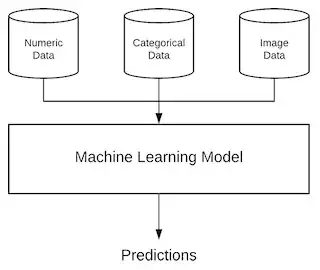I have two trained models. One is using a LinearSVC algorithm and is trained on numerical data from medical examination from patients with diabetic retinopathy. The second one is a neural network trained on images of retina scans from patients with the same disease.
The models predict if the patient has retinopathy or not. Both are written using Python 3.6 and Keras and have accuracy around 0.84.
Is it possible to combine those two models in any way to increase the accuracy of predictions?
I'm not sure in what way it could be achievable as they are using a different kinds of data. I have tried using ensembling methods but didn't get better scores with them.
